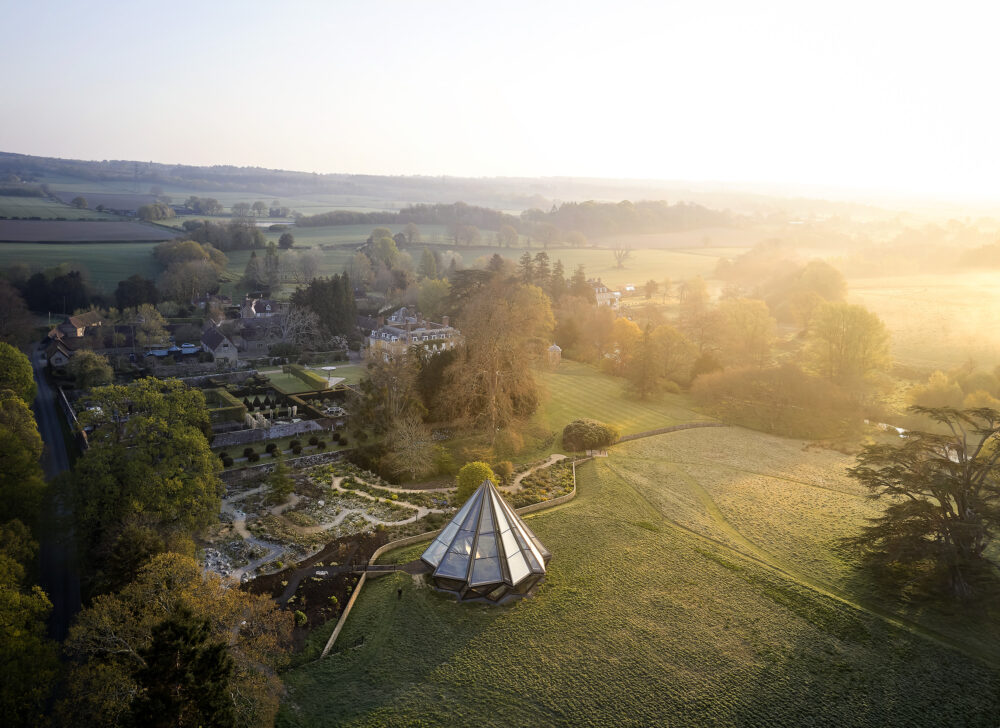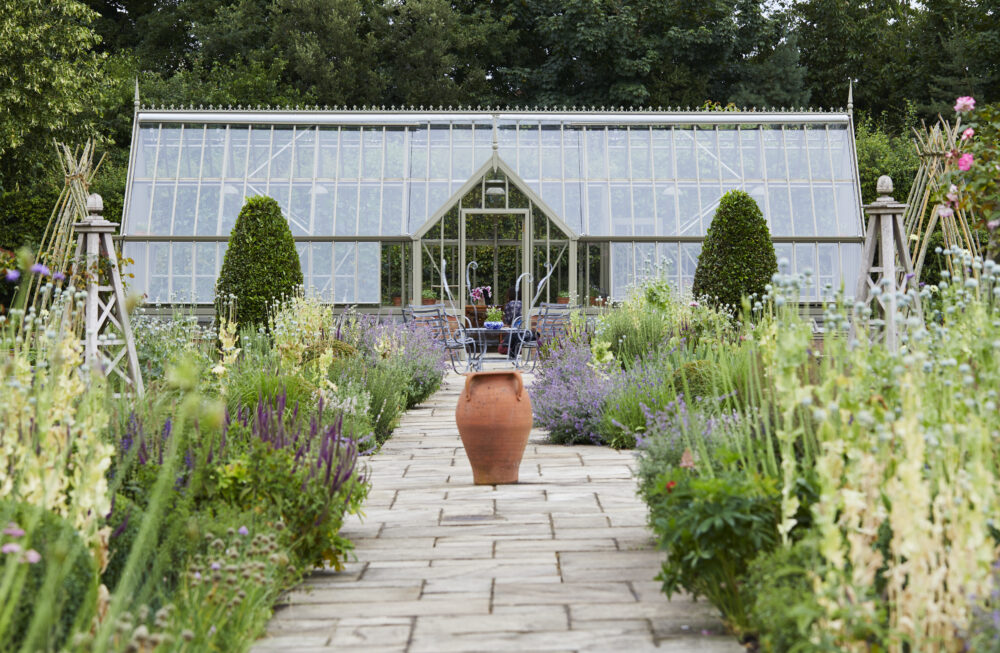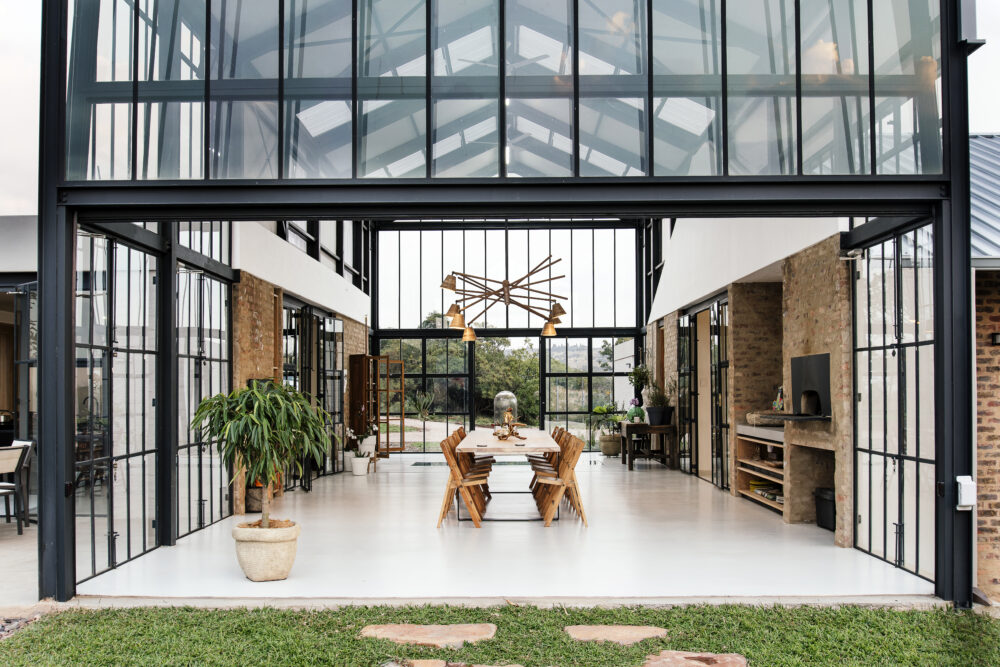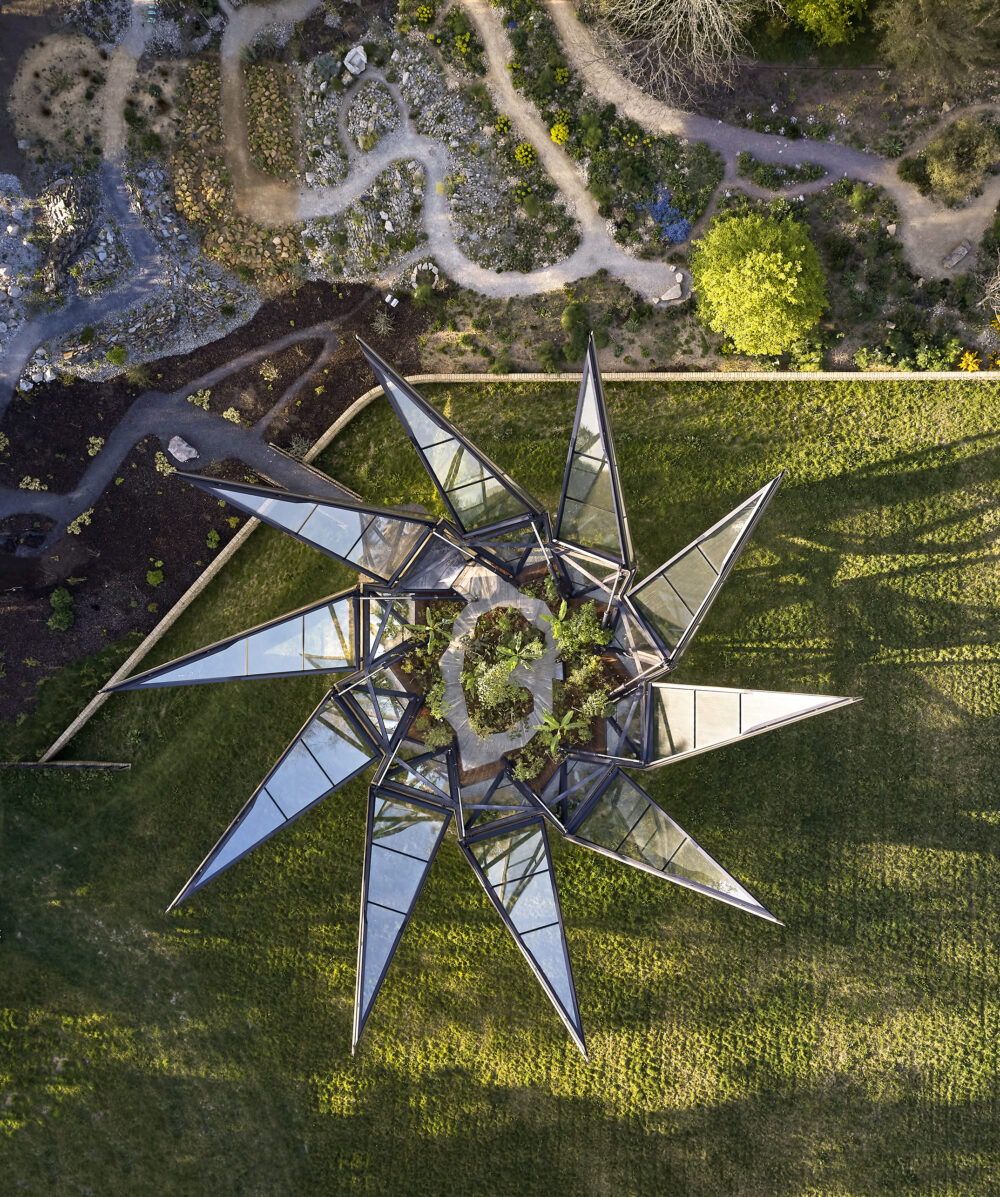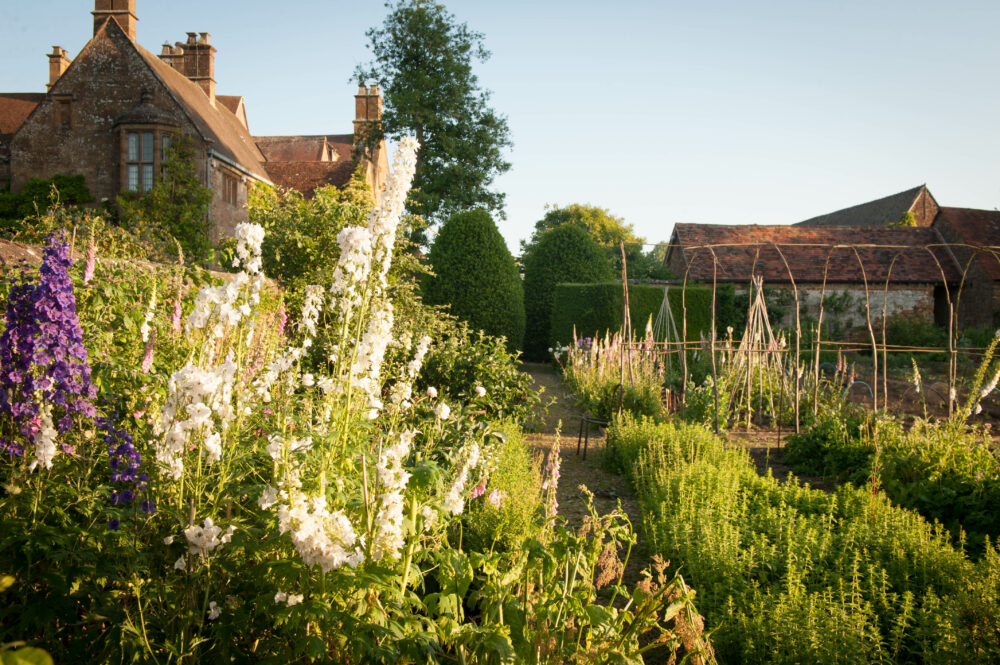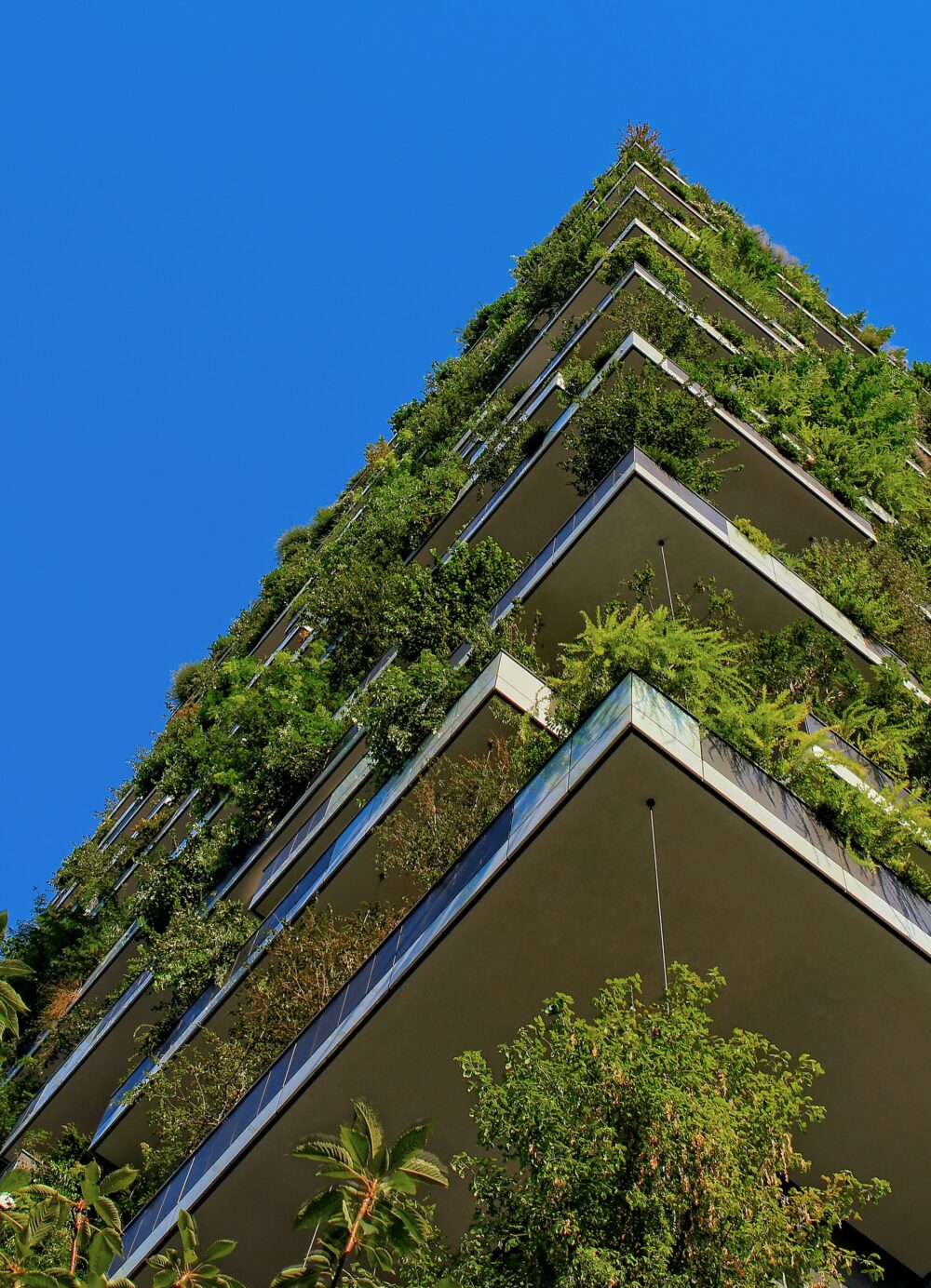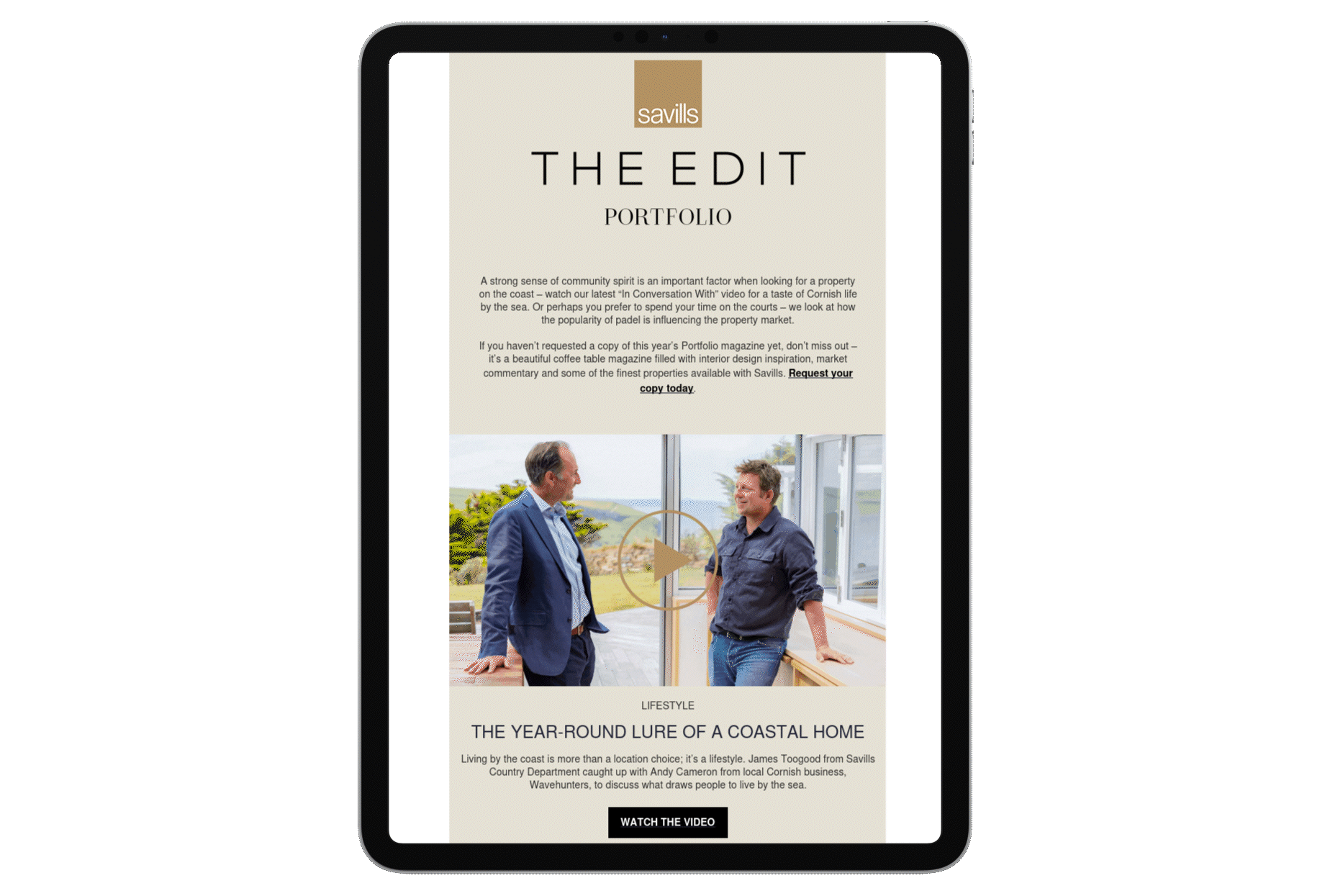A greenhouse is a familiar sight in the garden of many a country house. For centuries these neat glass structures have provided a warm and sheltered place for cultivating tropical plants and vegetables, out of the wind and rain. But today’s glasshouses are more than just growing spaces: they are also desirable venues for dinner events, drinks parties, yoga sessions and more. As a result, these humble garden shelters are becoming bigger and bolder in ambition.
“The greenhouse is becoming more of a leisure space,” says John Lawson of Hampshire-based Alitex, greenhouse supplier to the National Trust. “For six to nine months of the year, when the sun warms up the greenhouse during the day, it can be very comfortable for activities such as yoga, art or photography.”
The rise of farm-to-table dining has played a big role in this shift. Lawson points to custom designs that Alitex has created for high-end hotels such as Heckfield Place, Lime Wood and The Pig. Stocked with exotic fruit trees and organic veg, the glasshouses were primarily designed to provide fresh ingredients for the hotel restaurants. Before long, however, these prized assets were hosting afternoon teas and cocktail-making classes, providing a focal point for guests.
A glasshouse has become the main attraction in Woolbeding Gardens, a country estate in West Sussex. Here, the British designer Thomas Heatherwick, founder of Heatherwick Studio, has created an ingenious shapeshifting system. At the touch of a button, the 10 hydraulic “sepals” of this glass pyramid unfurl into a shape reminiscent of a giant flower, inviting visitors to step inside.
Glasshouses became popular in Europe in the 17th century, when grand structures such as the 150-metre orangery at the Palace of Versailles were coveted by the elite. The true golden age of the greenhouse didn’t arrive until the Victorian era, when the innovations of the Industrial Revolution meant factories could produce glass cheaply enough to be afforded by the masses. A new aesthetic was born, characterised by slender metal frames, elegant proportions and intricate detailing.
It is this style, rather than the more utilitarian look of the 20th century, that is driving the market for multifunctional glasshouses at home. The Danish architect Rasmus Jensen, who has designed orangery-like extensions for many clients, says a traditional approach is essential when adding to period properties. “I get a lot of requests from people looking for something that will fit the architecture of a house that is more than 100 years old,” he explains. “If it’s too clean and modern, it doesn’t work.” Jensen’s designs are highly versatile, with modern additions that include underfloor heating, automated climate-regulating windows and, in one instance, a pizza oven.
Other architects have been even more imaginative. Nadine Engelbrecht, from South Africa, designed a country house near Pretoria centred on a double-height glasshouse, creating a grand dining room that offers panoramic views of the surrounding grasslands. And in Czechia, RicharDavidArchitekti recently completed a house with a secret cactus-filled greenhouse slotted between the building volume and a translucent polycarbonate hip roof.
For those who want their greenhouses primarily for plants, the standalone structure is the preferred option. According to Tom Barry, CEO of the Lancashire-based glasshouse specialist Hartley Botanic, this model has huge appeal now that customers are waking up to the benefits of healthy eating and biophilia. Yet he believes the design of glasshouses will continue to diversify. “Many customers who are serious gardeners are using their greenhouses in a more multifaceted way,” he says, “for morning and evening relaxation, as well as for alfresco dining.” The greenhouse may just be the key to unlocking a healthier lifestyle, too.
Pictures from top: a house in Denmark designed by Rasmus Jensen; Heatherwick Studio’s Woolbeding glasshouse; a greenhouse by Alitex; Nadine Engelbrecht’s Pretoria country house; the Heatherwick glasshouse opens


